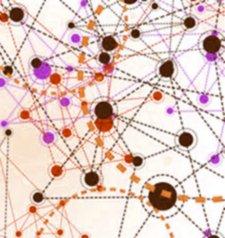The scientific objective of our research group is to extract biological knowledge from large-scale experimental data sets using data integration, comparative sequence/expression/chromatin analysis, network biology and machine learning. Through the development and application of novel bioinformatics methods, new aspects of genome biology, especially in the area of gene function prediction and gene regulation, are identified. One of the main goals is to develop and apply efficient methods to translate biological knowledge from model species to crops. For more information, see http://bioinformatics.psb.ugent.be/cnb/
Research objectives
During the last couple of years, we have mapped plant gene regulatory networks using a variety of experimental and computational methods. Apart from developing a transcription factor (TF)-target gene identification workflow based on the integration of novel protein-binding microarray data and multi-species promoter sequence conservation, we have also mapped regulatory interactions using ChIP-Seq, protein-binding microarray data and accessible chromatin information. We actively develop new comparative methods to identify conserved non-coding sequences in dicots and monocots and have demonstrated how these show high specificity to map functional TF-target genes in plants. Whereas initial network analysis focused on the model species Arabidopsis, we are in the process of expanding our network portfolio to other plants (dicots and cereals) and are exploring new opportunities (e.g. ATAC, single-cell genomics) to perform network-based gene analysis, both using bulk and single-cell data (see MINI-EX).
Through the development of the PLAZA comparative genomics platform, we have a strong track record in tool development and plant genomics data analysis. This platform serves as an information hub for comparative, functional and evolutionary plant genomics for a large variety of plants, both in academic and industrial research. To facilitate efficient data analysis for non-model species lacking complete genome sequence information, we have developed efficient methods which offer a rich resource for functional sequence analysis of complete transcriptomes in both uni- and multicellular organisms across the tree of life.
Through the development of the PLAZA comparative genomics platform, we have a strong track record in tool development and plant genomics data analysis. This platform serves as an information hub for comparative, functional and evolutionary plant genomics for a large variety of plants, both in academic and industrial research. To facilitate efficient data analysis for non-model species lacking complete genome sequence information, we have developed efficient methods which offer a rich resource for functional sequence analysis of complete transcriptomes in both uni- and multicellular organisms across the tree of life.
